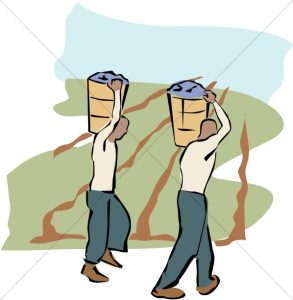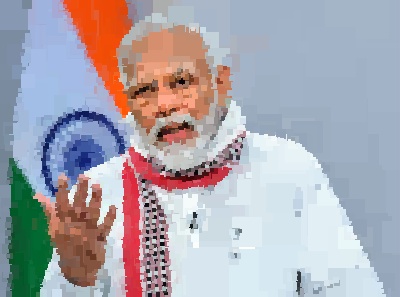So far, the union government’s fight against the coronavirus pandemic has been more theatrics and less planning and good execution
Prime Minister Narendra Modi has a flair for dramatics and a yen for suspense. He likes to keep people, including senior associates, guessing about what he will do next. This has paid great dividends in politics. His opponents and rivals have always been caught on the wrong foot by his actions.
The same tactics applied to serious administrative decisions, however. tend to create chaos for the citizens of the country. The sequence of lockdown announcements, hints, last moment speeches and constant changes of rules and regulations without keeping either his colleagues in the cabinet informed or taking chief ministers of states in the loop have only aggravated what was already a serious problem.
Fighting the biggest global pandemic in two centuries would have been hard enough if every politician, elected leader and civil servant in the country were reading from the same playbook. Unfortunately, he has ensured that everyone is fighting the same virus but using vastly different tactics. He has also ensured a spectacle every two weeks ostensibly to cheer doctors and other essential services personnel.
Take the original lockdown, for example. Before he made the dramatic announcement of a 21-day lockdown at four hours notice, he dragged his feet over meeting all the state chief ministers. He called for a meeting to chalk out a joint strategy for tackling the Coronavirus pandemic in SAARC countries and even mooted a special fund for it, while keeping chief ministers in India guessing about what the national strategy should be. When he finally met the chief ministers, it was a short meeting and it concluded without any specific decision being communicated about the lockdown plans.
He then called for a single-day, voluntary lockdown almost giving the impression that the danger was still far away even while state leaders were locking down their borders in a bid to slow down transmission. After most of the states had already announced a fortnight’s lockdown, he made a dramatic speech saying that the entire country would be shut down for 21 days, giving citizens just four hours to prepare.
He didn’t give the details about how essential services would function leaving it to the Home Ministry to come out with a broad guideline that left too many questions unanswered. The result was chaos as states scrambled to decide what were “essential products and services”, what kind of permissions should be given to their providers, whether any inter-state movement would at all be allowed or not.

The union government twiddled its thumbs as lakhs of migrant workers started for home on foot as trains, buses and every form of public transport had been shut down with practically no notice. Factories were forced to take shut down plants abruptly and make arrangements for workers who got stranded because of the lockdown. Trucks carrying goods got stuck for days at state borders as authorities quibbled about their movement with little guidance or interest from the centre.
It took almost two and a half weeks before a semblance of normalcy returned.
The first 21 days were essentially wasted as rules were not worked out in advance about how to go about things in a phased and systematic manner. States were also stuck without finances as the centre delayed releasing GST dues, did not allow liquor to be sold which would give the states some way of earning generating revenues, and did not provide any details about whether they could count on the money being collected in the newly announced PM CARES fund.
 Nor was the first 21 days used to shore up supplies of PPEs, and scale-up facilities for critical patients. While the government grandly announced the number of isolation beds that had been created, the number of ventilators for critical patients did not go up commensurately. PPEs were ordered only after the lockdown announcement and they came tardily and were often of shoddy quality. Quick test kits from China turned out to give defective thus wasting crucial time. Tax breaks and incentives and a proper administrative order which could have helped domestic producers to ramp up production of PPEs, ventilators, sanitisers and other stuff were never worked out.
Nor was the first 21 days used to shore up supplies of PPEs, and scale-up facilities for critical patients. While the government grandly announced the number of isolation beds that had been created, the number of ventilators for critical patients did not go up commensurately. PPEs were ordered only after the lockdown announcement and they came tardily and were often of shoddy quality. Quick test kits from China turned out to give defective thus wasting crucial time. Tax breaks and incentives and a proper administrative order which could have helped domestic producers to ramp up production of PPEs, ventilators, sanitisers and other stuff were never worked out.
The first lockdown extension announcing that the original 21 days would now become 40 was equally dramatic and badly planned. Even the railways did not know the lockdown was being extended and kept booking tickets. Airlines were told to stop taking bookings till further notice only after the announcement by the PM. The plight of migrant labour stuck was left to the states to handle with practically no help from the union government. Again, the PM had met the state chief ministers, given them only a little time to talk about their concerns, and kept them guessing about what he was going to do until he announced the extension in a speech to the citizens.
 The second lockdown announcement has not been made by the PM. Instead, it has come as a guideline from the Home Ministry. It is full of clauses and fine print of the kind that bureaucrats love to dream up (and of the kind we saw in the demonetisation and GST exercises). It talks of red zones, green zones and orange zones with rules of each. Each zone will have its own set of does and don’ts. You can get your hair cut in a green zone but not in a red zone. It is not even clear whether a doctor or nurse who stays in a green zone and works in a red zone will be able to go about work or not. All those details will be worked out eventually. Then states will also have their own set of rules. Meanwhile, the centre is finally planning to do something about migrant labour. A few trains might take them back to their home states but the details are still to be worked out.
The second lockdown announcement has not been made by the PM. Instead, it has come as a guideline from the Home Ministry. It is full of clauses and fine print of the kind that bureaucrats love to dream up (and of the kind we saw in the demonetisation and GST exercises). It talks of red zones, green zones and orange zones with rules of each. Each zone will have its own set of does and don’ts. You can get your hair cut in a green zone but not in a red zone. It is not even clear whether a doctor or nurse who stays in a green zone and works in a red zone will be able to go about work or not. All those details will be worked out eventually. Then states will also have their own set of rules. Meanwhile, the centre is finally planning to do something about migrant labour. A few trains might take them back to their home states but the details are still to be worked out.
The love for drama continues. In the first two rounds, the PM had exhorted citizens to clap hands to thank doctors and later light lamps while switching off all lights. This time, it will be the armed forces that will provide the necessary theatre with a fly past of aircraft, ostensibly to tell doctors they are doing a great job. (Meanwhile, the HMO guidelines also wields the stick – if doctors in green zone do not open their clinics, they will face the music.)
Most doctors and hospitals would rather have PPEs – and ventilators. And clearer rules. The industry would like clarity about operations and also some light about an economic stimulus from the Finance Minister. States would like greater coordination. But at the moment, none of that seems to be the priority.










Add comment